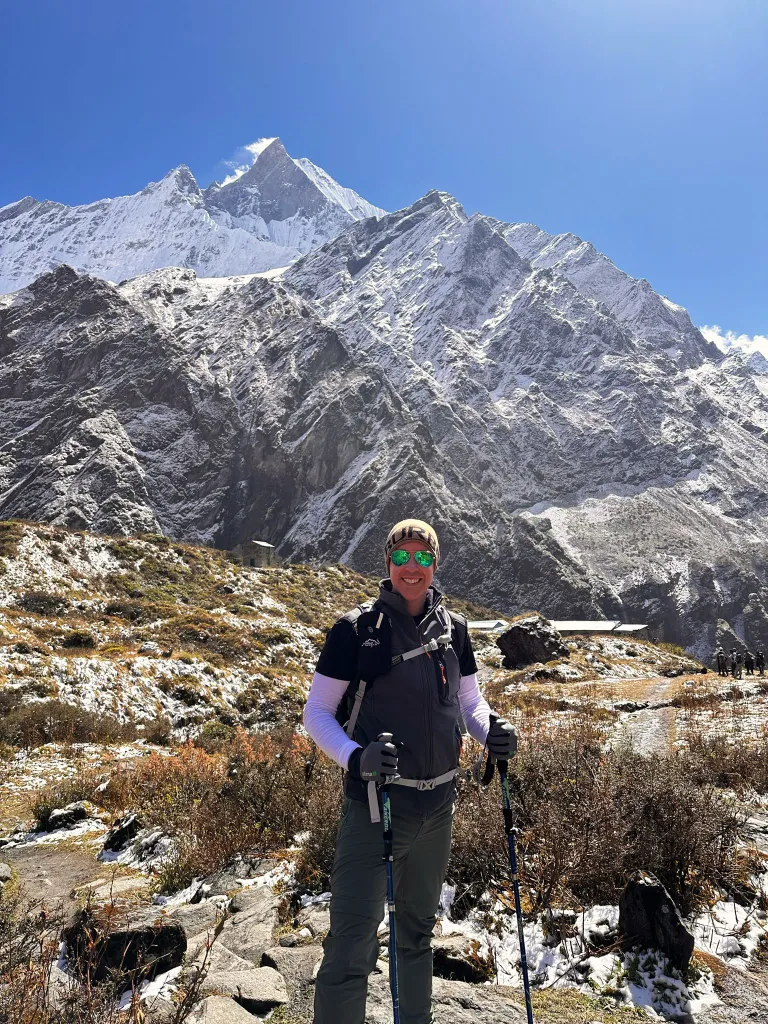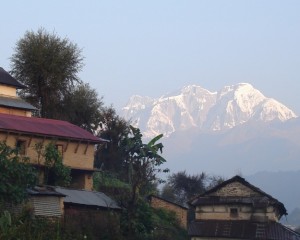How Difficult is the Upper Mustang Trek?
Are you looking to experience the desert-like landscape with the constant support of the white cheering mountain? Have you heard about the Upper Mustang Trek?
Upper Mustang Trek is a cultural trek through the remote and restricted zone of Upper Mustang in northern Nepal, near the border with Tibet. Once a forbidden kingdom, the area has a Tibetan-influenced culture, landscape, and architecture.
But can a beginner embark on this trekking trail? Well, the answer is yes, as the route is moderately challenging. You have to understand all the aspects that make the navigation of the upper Mustang trek difficult.
Overview of the Upper Mustang Trek
The Upper Mustang Trek is a cultural odyssey through the former Kingdom of Mustang, a region renowned for its unique and preserved Tibetan culture. The journey's highlight is the exploration of Lo Manthang, a walled city that once served as the capital of Mustang. This ancient city, with its narrow alleys, centuries-old Buddhist monasteries, and royal palace, offers a fascinating glimpse into the past.
Along the trek, you'll visit numerous historical sites, including ancient caves carved into the cliffs and monasteries that house priceless Buddhist artefacts. The local people follow a distinct Tibetan way of life and provide a rich cultural experience that allows you to witness their traditions and daily practices firsthand.
The trek winds through the Mustang Valley, known for its arid, desert-like landscape. Along the way, trekkers are treated to awe-inspiring views of some of the Himalayas' most majestic peaks, including Annapurna, Dhaulagiri, Nilgiri, Thorung Peak, Chulu West, Chulu East, Tukuche Peak, Lamjung Himal, and Annapurna II and IV. These towering summits provide a constant source of inspiration and a breathtaking backdrop to this unique trekking adventure.

Factors that Influence the Difficulty of Upper Mustang Trek
Upper Mustang Trek is one of the remote regions of the Mustang, a blend of natural beauty, cultural wonder, and historical intrigue. Despite its allure, the trek poses several challenges that contribute to its difficulty, making it a rewarding yet demanding adventure for trekkers.
Altitude and Acclimatization
The highest point of the trek, Lo Manthang, is approximately 3,900 meters. At such high elevations, altitude sickness can be a concern. It can cause symptoms like nausea, vomiting, shortness of breath, and fatigue and, if prolonged, lead to serious medical conditions. Adequate acclimatization days are required to help mitigate altitude-related risks. Consider using medications like Diamox as a preventive measure.
Daily Trek and Distance Covered
On the historical trail of Upper Mustang, you have to walk for about 5-7 hours per day. Daily distances vary around 15-20 km per day, depending on the terrain. Some days may cover more or less distance based on the terrain and altitude gains.
Terrain and Trail Conditions
The trails in Upper Mustang are well-marked but can be narrow and run along cliff edges in some sections. You have to be careful in these parts for footing and concentration. On the other hand, the terrain includes a mix of paved and unpaved paths, with occasional river crossings that can be challenging and tiring.
Weather and Seasonality
Upper Mustang experiences extreme weather conditions, from cold winters to hot summers. Winter trekking is challenging due to snow and freezing temperatures. Spring (March to May) and autumn (September to November) are considered the best times to trek for milder temperatures and clear skies. However, the region is also a rain-shadow area, so the summer season is also best for trekking in the region.

What kind of physical fitness is required to tackle the trail?
To tackle the Upper Mustang Trek, trekkers need a good level of physical fitness and endurance. The trek involves daily walks of 5-7 hours over varied terrain, including rocky paths and occasional river crossings. Cardiovascular fitness is crucial for coping with altitude gains and long trekking days. Strengthening leg muscles and core stability helps maintain balance on uneven trails and steep ascents. Prior trekking experience is beneficial.
Likewise, the pre-trek training regimen includes cardio workouts like hiking, running, or cycling, along with strength training exercises. Building endurance and stamina beforehand ensures trekkers can fully enjoy the cultural immersion and natural beauty of Upper Mustang without being overly tired.
Tips to Complete the Upper Mustang Trek
- Pack Wisely: Carry essential trekking gear, such as sturdy hiking boots, warm clothing layers, a good-quality sleeping bag, and trekking poles for stability.
- Stay Hydrated and Nourished: Drink plenty of water to stay hydrated, especially in high-altitude environments. Pack energy-rich snacks and meals for sustained energy levels.
- Respect Local Culture: Be mindful of local customs and traditions. Dress modestly, ask before photographing people, and respect religious sites and practices.
- Weather Awareness: Be prepared for varying weather conditions. Pack waterproof layers and be ready for sudden changes in temperature and weather patterns.
- Travel Insurance: Ensure you have comprehensive travel insurance that covers high-altitude trekking and emergency evacuations if needed.
To wrap up, Upper Mustang Trek combines rugged landscapes, ancient Buddhist heritage, and Mustang's unique culture. Despite challenges like altitude and weather, proper preparation and respect for local customs ensure a fulfilling trekking experience.

You should embrace adventure with fitness, cultural awareness, and a spirit of exploration to immerse in Mustang's timeless beauty. If you're drawn to Nepal's mountain trails, consider exploring the Nepal Vision Trek for another unforgettable journey through diverse landscapes and cultural treasures.
FAQS






